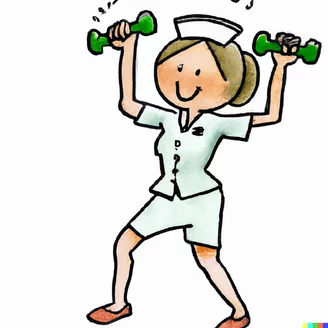The
Pandemic is officially over. At least that is the impression we just
received. A declaration of the end of the pandemic is now causing
quite a stir.
So that’s it? We are done with all that?
Experts are saying that it is highly likely that most of us have been infected with COVID-19, and we have a fair number of people vaccinated. That means that for most of us, the threat of COVID-19 is not the same as it was a year or two ago. That said, infections from COVID continue to decline slowly, but more than 300 Americans still die from COVID every day. Those numbers don’t really sound like it’s over, do they?
What cannot be over just yet — especially if you have loved ones who are vulnerable to severe disease or death from COVID-19 — are good hand hygiene, common sense approaches to going out into crowded areas (wear a mask!) and getting tested. Vaccines and boosters have helped to keep people from severe disease and death. For those 70 and older, or those with just about any underlying health condition — including, dare I say it, inactivity — the pandemic is not over, and we need to talk about it.
That’s right, exercise.
Fall is when we start spending more time indoors. It gets dark earlier, and it’s easier to go from your desk to your couch to your bed, with lots of food in between. If you’re still reading a COVID column in late 2022, nodding along with my recommendations for masking, testing, and ventilation, you’re serious about your health and the health of those around you. So, if you follow safety recommendations but haven’t been exercising, you’re basically putting a bigger bumper on your car but not changing the oil or putting air in the tires. That’s a recipe for bad outcomes.
A study from March of almost two million adults in 10 countries showed that those who participated in regular physical activity every week had an 11 percent lower risk of infection with SARS-CoV-2, the virus responsible for COVID-19. They also had 36 percent lower risk of hospital admission, 44 percent lower risk of severe COVID-related illness, and 43 percent lower risk of death from the virus than those of the same age who were more sedentary.
Cold and flu season, colder weather, winter months and holiday time can be challenging for people to stay active. I know for myself, I need to get up and move more. I like to travel, and I am not currently in travel shape. I need help getting there though, so I reached out to my colleagues here at UIHS who are in the “moving” business. They sent me some great tips that I’d like to share with you. These ideas were submitted by Ryan Matteri, UIHS Fitness Coordinator and Dennis Hernandez, Physical Therapy Provider:
The exercises listed below are merely suggestions and are not a “one size fits all” solution. Injuries can make exercising more difficult. Some of these suggestions may need be avoided if you experience pain during the movements or have a recent injury - consult with your primary care provider if you’re not sure.
Regular physical activity is one of the best things that you can do for your health. Thirty minutes of movement can help reduce your risk of chronic disease, enhance your fitness level, prevent injuries, and improve your overall mental/physical health. Unfortunately, as the winter months are approaching, the weather sometimes does not cooperate with our outdoor activities. Here are 5 tips to find opportunities for movement throughout your day when you are stuck inside this winter:
1. Supported squats at the kitchen counter, sit-to-stands from a stable chair or sofa, push-ups, lunges, and abdominal crunches. These traditional exercises require minimal space and are great for working specific body parts.
2. Walk around the house during commercial breaks during your favorite TV show or movie.
3. Use the stairs. A few brisk trips up and down stairs will soon get your heart pumping. Increase the speed for increased benefits. Make as many trips as you can.
4. Complete chores around the house. Many household activities burn up calories at a fast rate and do a good job of working different muscles.
5. Dance to some upbeat music. Ten minutes spent dancing to your favorite tunes morning and night can go a long way to meeting physical activity targets. And it’s fun!
If you find yourself skipping out on exercise because of difficulty standing, then you should consider chair exercises. Our physical therapists can guide you through a routine, and there are great options available online as well.
I encourage you to move more, for both your physical AND mental health. Isolation, loneliness, depression, fear and anxiety have taken their toll on many of us. While this is getting better, it’s important to be honest with yourself about your mental health and reach out for support if you need it. A little bit of exercise can go a long way towards improving your mental state, and help your body feel better too.
If you’re serious about preventing poor outcomes from COVID-19, rededicate yourself to fitness and a healthy lifestyle.
###
Michelle Lewis-Lusso (she/her) is an Infection Prevention and Control nurse at United Indian Health Services, serving the 11,000+ clients and staff at their seven area clinics. Michelle isn’t trying to be Ms. Olympia, but she may want to hike Mt. Olympia someday, so she’ll keep exercising.

CLICK TO MANAGE